Search Thermo Fisher Scientific
Invitrogen
IL-1 beta Monoclonal Antibody (CRM56), Functional Grade, eBioscience™
图: 1 / 8
IL-1 beta Antibody (16-7018-81) in Flow
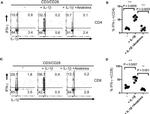
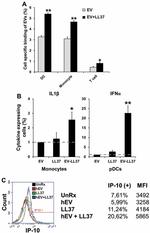
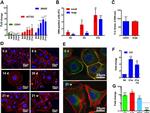


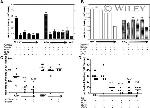
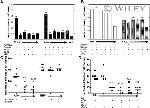
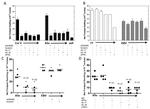
产品信息
16-7018-81
种属反应
已发表种属
宿主/亚型
分类
类型
克隆号
偶联物
形式
浓度
纯化类型
保存液
内含物
保存条件
运输条件
RRID
产品详细信息
Description: The CRM56 antibody reacts with human and baboon interleukin-1 beta; (IL-1 beta). IL-1 beta is a 17 kDa factor secreted primarily by monocytes. IL-1 has effects on T-helper cells, inducing IL-2 secretion and expression of IL-2 receptors. IL-1 has effects on B cells, promoting cell proliferation and immunoglobulin synthesis.
Applications Reported: The CRM56 antibody has been reported for use in cytokine neutralization, and ELISA. Fluorochrome conjugated CRM56 is recommended for use in intracellular staining for flow cytometry. Functional Grade purified CRM56 antibody, Product # 16-7018) is recommended for use in functional assays.
Applications Tested: The CRM56 antibody has been tested as the capture antibody in a sandwich ELISA for analysis of human interleukin-1β (IL-1β) in combination with the biotin CRM57 (13-7016) antibody for detection and recombinant human IL-1β (14-8018) as the standard. A suitable range of concentrations of this antibody for ELISA capture is 1 - 4 µg/mL. A standard curve consisting of doubling dilutions of the recombinant standard over the range of 1000 pg/mL - 8 pg/mL should be included in each ELISA plate.
The Functional Grade Purified CRM56 antibody has been tested by LAL assay to verify low endotoxin and by bioassay to verify neutralization of IL-1β bioactivity. For in vitro neutralization, the CRM56 antibody at 2.5 µg/mL has been found to neutralize by 50% the effect of 1 ng/mL human IL-1β bioactivity in a D10.G4.1 cell proliferation bioassay.
Storage and handling: Use in a sterile environment.
Filtration: 0.2 µm post-manufacturing filtered.
Purity: Greater than 90%, as determined by SDS-PAGE.
Endotoxin Level: Less than 0.001 ng/µg antibody, as determined by LAL assay.
Aggregation: Less than 10%, as determined by HPLC.
靶标信息
Interleukin-1 beta (IL-1 beta) is a proinflammatory cytokine expressed by monocytes, macrophages, and dendritic cells. IL-1 beta is synthesized in response to inflammatory stimuli as a 31 kDa inactive pro-form that accumulates in the cytosol. Cleavage of pro-IL-1 beta into the active 17 kDa protein requires the activation of inflammasomes, which are multi-protein complexes that respond to pathogens, stress conditions, and other danger signals. Inflammasome activation triggers the processing of the caspase-1 precursor into its active form, which in turn cleaves pro-IL-1 beta. IL-1 beta lacks a signal sequence peptide for classical ER/Golgi pathway and is secreted alongside caspase-1 via an alternate and incompletely understood mechanism. Although IL-1 beta is most often secreted in its active form, secretion of the uncleaved protein may be detectable under some biological conditions. IL-1 beta signals through two receptors, IL-1RI and IL-1RII, both of which are shared with IL-1 alpha. IL-1 beta activity can be moderated by IL-1 Receptor Antagonist (IL-1RA), a protein produced by many cell types that blocks receptor binding through competitive inhibition. IL-1 beta play an important role in innate host defense by triggering the production of other proinflammatory cytokines in target cells and initiating acute-phase responses to infection and injury. Elevated levels of IL-1 beta have been associated with many chronic inflammatory conditions IL-1 beta neutralizing antibodies potential therapeutic value.
仅用于科研。不用于诊断过程。未经明确授权不得转售。
生物信息学
蛋白别名: Catabolin; Hematopoietin 1 (H1); IFN beta inducing factor; il 1b; IL 1β; IL-1 beta; IL1 B; IL1β; ILN; Interleukin; Interleukin 1 beta precursor; interleukin 1, beta; Interleukin-1 beta; Interleukin-1b; Interleukin1 beta; LAF; Osteoclast activating factor (OAF); preinterleukin 1 beta; Pro interleukin 1 beta; pro-interleukin-1-beta
基因别名: IL-1; IL1-BETA; IL1B; IL1F2
UniProt ID: (Human) P01584
Entrez Gene ID: (Human) 3553



